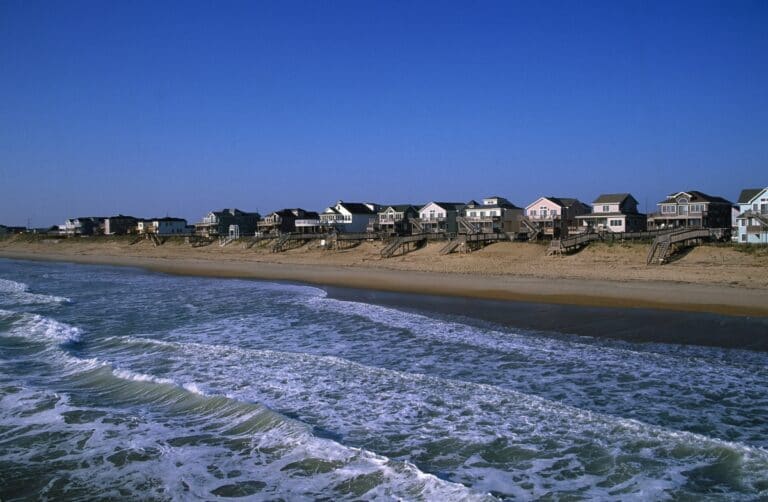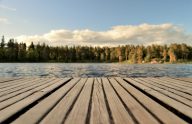Owning a ‘private’ beachfront home in North Carolina comes with caveats

Have you ever wondered how nice it would be to own a private beach house along the immaculate blue beaches of the Outer Banks?
Well, hold onto that thought for a moment, because there are no real “private” beaches in North Carolina. Also, the Old North State’s draconian coastal policies often make owning an oceanfront home more trouble than it’s worth.
In February, for instance, CNN reported a horror story of a beachfront home in Rodanthe that collapsed into the ocean due to rising sea levels. And it was not the first event of that kind: Similar disasters were reported in 2012 and 2020.
How did it come to this?
It started with the state taking away coastal homeowners’ long-term options for protecting their homes from erosion and weather events. In 2003, the state officially banned coastal homeowners from building any permanent armoring structures such as seawalls, jetties, bulkheads, and revetments. Only temporary sandbags remain allowed.
This ban has been controversial throughout its lifetime, as properly engineered hard armoring structures are proven and crucial means of protecting coastal homes from disasters.
Donna Moffitt, director of the North Carolina Division of Coastal Management, epitomized the agency’s utter lack of respect for coastal homeowners when she explained: “We can’t sacrifice a sandy beach that is going to bring in lots of tourists and lots of tourists’ dollars to protect one person’s investment.”
On principle alone, one person’s “investment” shouldn’t be any less important than the state’s tourism revenues—because what’s at stake is private property rights.
But even from an economic standpoint, North Carolina is making a mistake. Policies that disrespect coastal property owners make North Carolina an extremely unattractive state in which to build and own coastal homes, therefore hurting the tax base and long-term economic growth.
Exacerbating the matter is the fact that private beaches are fictional concepts in North Carolina.
In most states, the dry sand areas in front of beach homes, above the mean high-water mark, are private properties. In North Carolina, pressure groups have sought to have the dry sand areas declared as public areas, resulting in towns passing ordinances that prohibit property owners from restricting access to their sandy beaches.
There are numerous risks in allowing the public into private properties. What if people threw rowdy parties and created noise, preventing the owners from enjoying their peace and quiet? What if people left trash everywhere, leaving the owners to clean up after their messes?
In addition to interrupted privacy and serenity, is it fair that beachfront property owners, who have paid a fortune for their exclusive beach rights, should bear public cleanup costs?
In comparison, states like Massachusetts, Maine, and Virginia protect private property owners’ rights all the way to the mean low water mark. (Massachusetts is considering legislation that would make its coastal property rights more like North Carolina’s, however.)
Also, states like Florida clearly authorize the building of seawalls and other hard armoring structures to protect private properties from damage due to coastal erosion.
There’s a lesson or two to be learned from these states.
Property owners will generally allow public access as long as public beachgoers behave themselves. Alternatively, if these users are unable to behave, the best outcome may be no access in the first place.
When it comes to coastal armoring, outright bans leave coastal property owners with no means of protecting their properties when the ocean inches closer. Even if one could somehow prove that properly designed seawalls speed up erosion, a sound public policy would be to recommend the natural alternatives. A ban goes too far.
North Carolina’s coastal homeowners should be allowed to protect their homes from public nuisance and climate change. Until they are, owning a beachfront home in the Old North State may remain more of a nightmare than a privilege.




